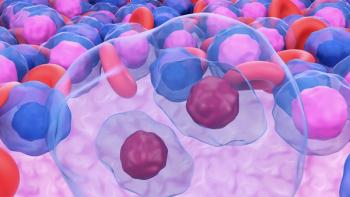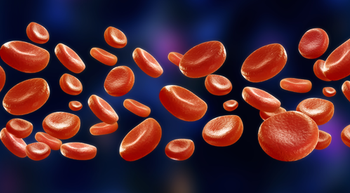
And The Answer is No: Calcium and magnesium treatment do not reduce oxaliplatin-related neurotoxicity
Neuropathy is a dose-limiting toxicity associated with oxaliplatin treatment. Clinical trials suggested that high doses of calcium and magnesium, given before and after oxaliplatin containing regimens, help prevent or reduce neuropathy. Consequently, calcium and magnesium administration was widely adopted in clinical practice.
Neuropathy is a dose-limiting toxicity associated with oxaliplatin treatment. Clinical trials suggested that high doses of calcium and magnesium, given before and after oxaliplatin containing regimens, help prevent or reduce neuropathy. Consequently, calcium and magnesium administration was widely adopted in clinical practice. Two further clinical trials, however, were closed early when initial data suggested lower response rates in patients receiving calcium and magnesium (the response rate later was determined to be nearly identical to that of patients not receiving calcium and magnesium).
The early discontinuation of the two clinical trials, the divergent results, and the widespread use of calcium and magnesium in clinical practice was the stimulus for a phase II N08CB/Alliance trial led by Charles Lopriniz, MD from the Mayo Clinic. Loprinzi and colleagues around the U.S. assessed whether calcium and magnesium treatment reduces oxaliplatin-related neurotoxicity in patients with colon cancer receiving adjuvant FOLFOX (fluorouracil, leucovorin, and oxaliplatin). In the double-blind study, 353 patients receiving adjuvant FOLFOX were randomized into three groups. Group one received 1 Gram of calcium gluconate plus 1 Gram of magnesium sulfate immediately before and after chemotherapy. Group two received 1 Gram of magnesium sulfate immediately before chemotherapy and a placebo after chemotherapy. Group three received a placebo before and after chemotherapy. The primary endpoint was cumulative neurotoxicity measured by a validated neuropathy scale.
The rates of grade 2 or higher neurotoxicity were 43% in the calcium/magnesium before and after group, 46% in the calcium/magnesium before and placebo after group, and 45% in the placebo before and after group. There were no significant differences between the two calcium/magnesium groups and the placebo group in the sensory neuropathy scale, on the motor neuropathy scale, or autonomic neuropathy scale. There were no significant differences in time to grade 2 or higher neuropathy on clinician assessment and there was no evidence of benefit of treatment in subgroups defined by age, sex, disease stage, and specific FOLFOX regimens. For acute neuropathy (within 5 days after each oxaliplatin dose), there was no beneficial effect of treatment in sensitivity to touching cold items, discomfort swallowing cold liquids, or muscle cramps. A small benefit was observed in reducing throat discomfort. There were no differences in toxicities among treatment groups (e.g. diarrhea, constipation, stomach cramping, bowel problems, and laboratory parameters). The researchers concluded that the data do not support using calcium and magnesium to protect against oxaliplatin-induced neuropathy.
Reference
Loprinzi CL, Qin R, Dakhil SR, et al. Phase III Randomized, Placebo-Controlled, Double-Blind Study of Intravenous Calcium and Magnesium to Prevent Oxaliplatin-Induced Sensory Neurotoxicity (N08CB/Alliance). Journal of Clinical Oncology, 2013. Published online before print 12/3/13, doi: 10.1200/JCO.2013.52.0536.
Newsletter
Knowledge is power. Don’t miss the most recent breakthroughs in cancer care.

















































































